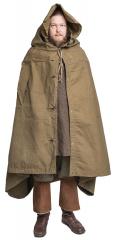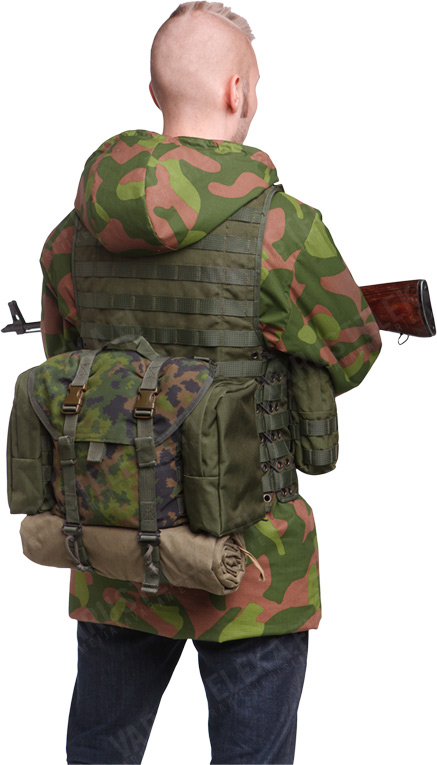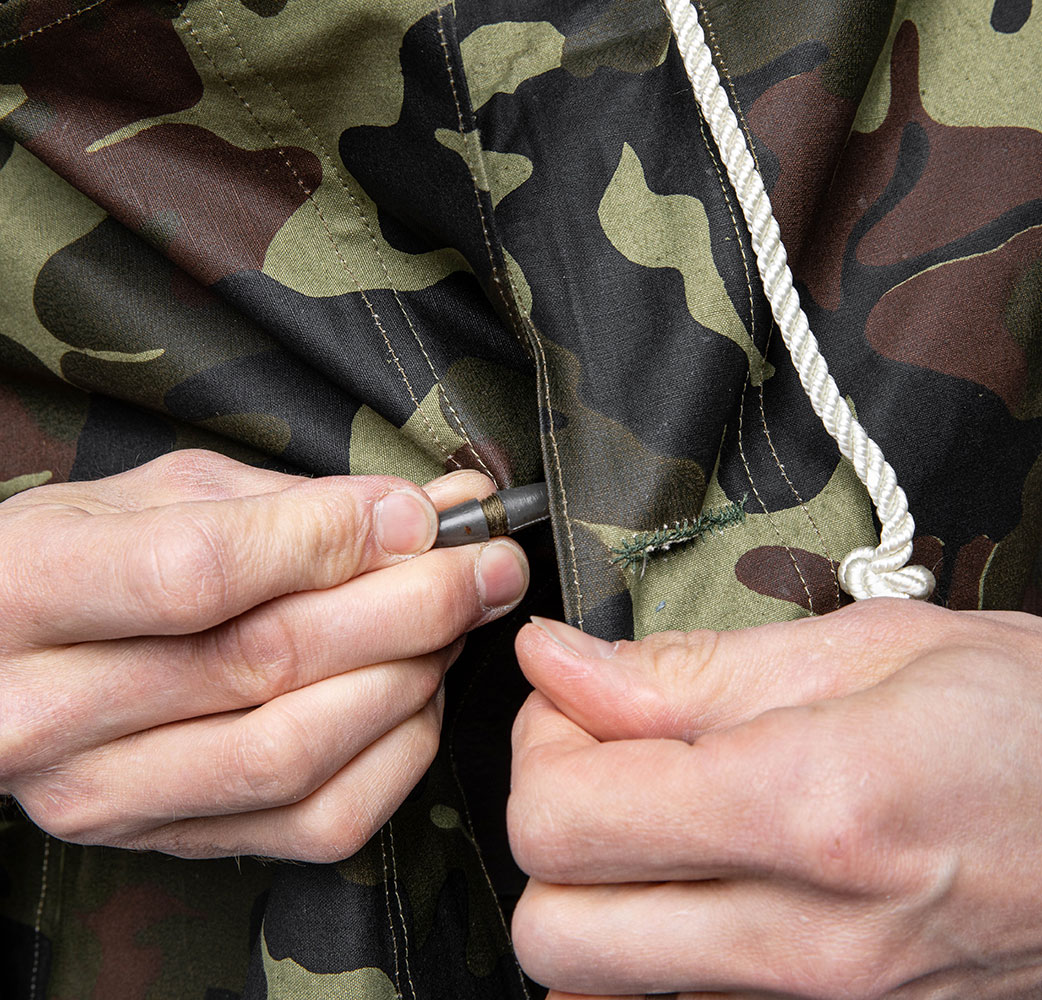

Note that the rolled greatcoat was always worn from the left shoulder to the right hip so that the rifle or SMG could be properly fired from the right shoulder. Russian soldiers were not issued blankets and were expected to use their greatcoat to sleep under. In actual fact this item is a rolled greatcoat. The classic image of the Soviet soldier has him with a blanket roll across his chest. We have mentioned his backpack several times and have discussed the design of this item in another blog. The Soviet’s kit was not limited to what was on his belt. It is both a quick draw and minimum weight solution! The flap is fastened by a button, toggle or popper.

The shaft is passed through a loop and a flap used to secure the top. The simplest and most interesting is the one shown below. Several designs of carrier were used for the e-tool. If the tool was expected to be urgently needed for close combat it might be tucked through the front of the belt. Alternately the tool was tied to the pack. A dense items such as an entrenching tool might injure the wearer if it was fallen upon so the Soviet e-tool was on the flank, with the ammunition pouch preventing it creeping forward. In contrast the Soviet carried his on the right side. The German soldier seems to have favoured carrying this on his left side, sometimes towards the rear. The final belt item was an entrenching tool. The belt would also carry a water bottle. A grenade pouch was usually worn on the left side. Reenactor websites I have viewed are insistent that it became routine to wear just one ammunition pouch, which was positioned on the right of the belt. At the start of the war a pouch was worn each side in the same fashion as a German soldier. So what did the Soviet soldier carry? There would be an ammunition pouch. Some removed the gas protection equipment and used the bags for more useful items.

Once it was accepted that gas warfare was unlikely Soviet soldiers often did not bother to wear this bag. The Soviet equivalent was a canvas bag carried near the left hip. Other blades such as German trench knives or Finnish puukot might also have been carried.Īn iconic equipment item of the German soldier is the metal canister used to carry his gas mask. Scouts and some other troops might carry the NR-40 knife. While the bayonet was a useful fire poker, screwdriver, pot lifter and candlestick it was not much use as a utility knife. Bayonet scabbards tend to be all metal and on the heavy side in my experience, so this policy may have saved the Soviet soldier a few ounces of unnecessary weight. No bayonet scabbard was issued in wartime since they were not needed. Some other Soviet weapons had folding bayonets. It was also a handy implement for clearing a jammed cartridge. The standard bayonet had a screwdriver tip for adjustment of certain parts of the rifle. The Soviet rifle used a socket bayonet that was kept permanently attached to the rifle. The German usually placed his bayonet over his entrenching tool. The breadbag may placed inside the pack rather than being worn on the belt.Īnother “missing” item is the bayonet scabbard. Again the Soviet seems to have preferred to carry his rations and personal items in his pack. There was a Soviet version of the breadbag but it does not seem to have been so widely used. An older pattern of circular pail was also in use. The Soviet mess tin was a kidney section pail of similar design to the German. The Soviet seems to have preferred to carry his mess tin in his backpack or tied to the outside. Sometimes the mess tin was attached to the yoke or a backpack but carry on the belt was very common.

The German routinely carried his mess tin and breadbag on his belt. The first thing you notice when comparing the German and the Soviet is what is not there.


 0 kommentar(er)
0 kommentar(er)
